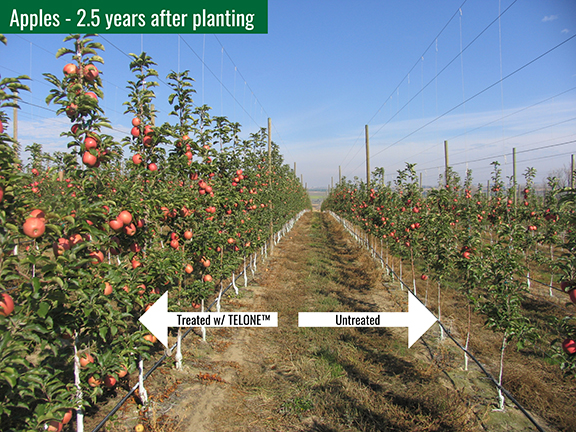Improve Your Organic IPM Practices
Government statistics indicate that food production will need to rise 50% to 70% over the next 30 to 40 years to sustain the rapidly rising global population. We also know that in 2012, sales of organic food products exceeded $28 billion. There is no other sector of agriculture that shows such an upward trend.

Recent trial results show that multiple applications of alternative insecticides may be needed for insect control at moderate to high pest populations.
Photo Credit: Ayanava Majumdar
Organic foods have added to the choices consumers have in stores and have helped sustain numerous small producers nationwide. Plus, many beginning growers living near urban areas are organic family farms, so it’s important that the entire food production industry work together to meet the global food challenge.
Five Tips To Improve Your Organic IPM
- Start applying alternative insecticides when caterpillars are small and be sure to use the moderate labeled rates.
- For high pest pressure situations, you may need three to four consistent applications of an effective material depending on product and weather. For example, you may have to reapply insecticides more often if it rains during the week, or if you are experiencing an outbreak. In research trials, untreated tomato plots with wheat straw mulch in-between rows had poor plant stands and heavy (40%) fruit damage from caterpillars.
- Once pest populations are reduced, stop using insecticides.
- Always treat crops in the evening hours when bees are not around and beneficial insects are less active on the foliage. Toxicity to bees from most broad-spectrum insecticides goes down significantly when the spray solution has dried on the leaf surface.
- If you are a small farmer, get a good quality backpack or ATV-mounted sprayer and calibrate the equipment to save on insecticidal materials. ATV-mounted sprayers are easily detachable, and provide a consistent application rate and a deep penetration of plant canopy.
Properly Manage Your Insecticides
Small organic growers must use alternative insecticides as a last resort, as they are just one of many “tools” growers should have in their IPM toolbox. Before using approved insecticides, growers should employ cultural IPM tactics, like sanitation and trap crops, as well as the use of mechanical exclusion, such as netting, for reducing crop damage.
Most organic insecticides should be used preventively, meaning they should be used at low insect populations because they have little to no effect when insects have overrun the plants and the crop is already damaged. Unfortunately, once insects are on the crops, growers don’t have a whole lot of time to act. Just a few can cause significant yield reduction in high-value crops and can devastate rows of produce if left untreated.
Results from recent tomato crop trials indicated that multiple applications of alternative insecticides may be needed for insect control at moderate to high pest populations, especially under hot and humid weather conditions. For example, Xentari (Valent U.S.A.) and PyGanic, (MGK Company) can be tank mixed and applied for two weeks during low caterpillar infestations to protect developing tomato plants and fruits.
Growers should also remember that certain organic insecticides are insect-specific and their correct use depends on proper insect identification and site-specific application. It is important to stay in touch with your Extension agent for IPM resources (i.e. crop scouting) and consultation.
Many IPM publications and training videos are available on the Alabama Vegetable Extension IPM website, www.aces.edu/go/87.









